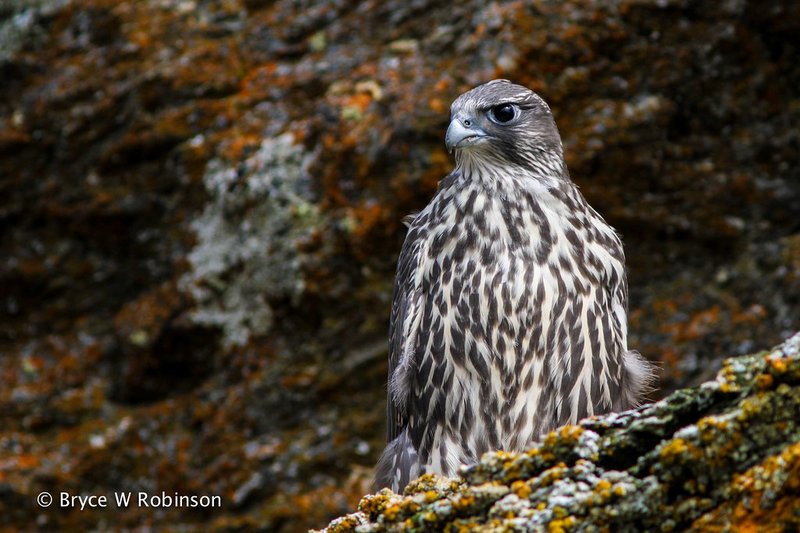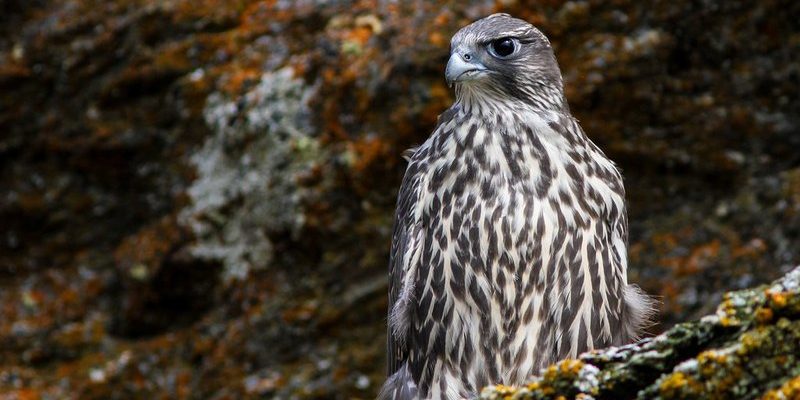
Raising young gyrfalcons is more than just laying eggs and hoping for the best. It’s an intricate process that involves careful planning and nurturing. Much like how parents guide their children through the ups and downs of life, gyrfalcons play an active role in teaching their young essential survival skills. The sheer determination and dedication they display are truly inspiring. So, grab a coffee, and let’s explore the remarkable journey of gyrfalcon parenting!
Where Gyrfalcons Nest
Gyrfalcons choose some of the most remote and rugged locations for nesting. They often prefer cliffs, high rocky ledges, and even old raven or eagle nests. These heights give them a commanding view of their surroundings, allowing them to spot potential threats and prey easily.
You might wonder why they prefer such elevated spots. It boils down to safety. By nesting high, they protect their chicks from ground predators like foxes or larger birds of prey. It’s like having a house on a hill—secure and safe, far from the dangers lurking below.
During the breeding season, which typically runs from late winter to early spring, adult gyrfalcons will tirelessly scout for the perfect nesting site. Once found, they prepare it by adding insulation, often using feathers and grass to create a cozy environment for their future offspring. This attention to detail sets the stage for a successful breeding season.
The Mating Rituals
Before any chicks can hatch, gyrfalcons must first engage in courting and mating. Their courtship rituals are nothing short of spectacular. Male gyrfalcons display their prowess through aerial acrobatics, diving and swooping through the air to impress potential female partners.
Here’s the thing: these displays aren’t just for show. They serve as a demonstration of the male’s strength and hunting skills, which are crucial traits for raising young. A female will carefully observe and choose a mate that she believes will be a reliable provider.
Once a pair bonds, they mate for life, returning to the same nesting site year after year. This loyalty ensures that the parents are well-acquainted with their territory, maximizing their chances of successfully raising their chicks. It’s a beautiful example of commitment in the animal kingdom.
The Egg-Laying Process
After the courtship, it’s time for the female gyrfalcon to lay her eggs. Typically, a clutch consists of about three to five eggs, but it can vary. These eggs are usually pale to buff in color, marked with darker spots.
Once the eggs are laid, both parents share incubation duties. This lasts about 30 to 35 days. The female is primarily responsible for keeping the eggs warm, while the male will hunt for food. Talk about teamwork!
During this incubation period, the parents must be vigilant. They take turns sitting on the eggs, ensuring they stay warm and protected from the elements. If you picture them as a loving couple, it’s like they’re snuggling under a warm blanket, ensuring their little ones have the best chance at life.
Chick Hatching and Early Life
When the eggs finally hatch, it’s a moment of excitement. The chicks, called eyasses, are initially blind and covered in downy feathers. They rely entirely on their parents for food and warmth. This stage is critical, as the survival rate of the young depends heavily on the parents’ ability to provide.
For the first few weeks, both the male and female work tirelessly to feed their chicks. They hunt small birds and mammals, using their sharp vision and keen hunting skills. Imagine the parents as chefs, preparing meals for their little ones, ensuring they get the nutrition needed for healthy growth.
As the chicks grow, they start to develop their feathers and gain strength. Around three weeks in, they begin to explore their surroundings, hopping around the nest and practicing their wing beats. It’s almost like watching toddlers take their first steps, full of clumsiness and excitement.
Teaching Survival Skills
As the chicks mature, the real parenting kicks in. Gyrfalcons are known for their hands-on approach to raising their young. Parents patiently teach their eyasses how to hunt. The male often brings back prey, allowing the chicks to practice their pouncing and grabbing techniques.
Here’s where it gets interesting: young gyrfalcons learn by watching their parents. They observe how the adults handle various prey and navigate the skies, picking up essential skills. This learning process is akin to how kids watch their parents cook or drive; they absorb knowledge through observation.
The parents also demonstrate how to defend themselves against potential threats. Being a predator isn’t just about catching food; it’s about knowing when to retreat and how to stay safe. This well-rounded education is crucial for the young falcons’ future independence.
Fledging and Independence
After several weeks of nurturing and skill-building, it’s finally time for the chicks to take flight. This stage, known as fledging, usually occurs around eight to ten weeks after hatching. The moment they leap from the nest is filled with excitement and a bit of anxiety.
Initially, the chicks may struggle to gain altitude and control. But like any young adult trying something new, they eventually find their wings. The parents stay nearby, offering encouragement and support during this challenging transition.
Once they successfully take flight, the real adventure begins. The young gyrfalcons will continue to rely on their parents for food for a while. It’s sort of like a college student moving back home—still needing some guidance but beginning to spread their wings (literally) to embrace independence.
The Importance of Parental Care
So, why is all this parenting effort so crucial? Gyrfalcons face various challenges in the wild, from harsh weather to limited food sources. Strong parental care is vital for ensuring that the next generation survives and thrives.
The more nurturing the parents are, the higher the chances of their young reaching maturity. It’s not just about survival; it’s about raising resilient, strong falcons that can handle the challenges of their environment.
As with many species, this bond between parent and offspring is fundamental. It fosters a connection that helps young gyrfalcons adapt, learn, and thrive in the wild. By understanding the dynamics of their parenting, we can appreciate the complexities of nature and the dedication it takes to raise the next generation of these magnificent birds.
In the end, gyrfalcon parenting is a beautiful dance of dedication, adaptation, and love. It’s a reminder of how nature always finds a way to ensure the survival of its most remarkable creatures, teaching us valuable lessons about commitment and nurturing along the way.

